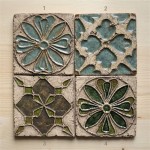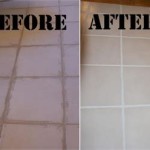Can You Put Tile On Concrete Patio
A concrete patio offers a durable and versatile base for various outdoor finishes. Among these, tile stands out as a popular choice for its aesthetic appeal and practicality. This raises the question: can you put tile on a concrete patio? The answer is a resounding yes, provided the concrete surface is properly prepared and the correct installation techniques are followed.
Several factors contribute to the successful installation of tile on a concrete patio. These include the condition of the existing concrete slab, the type of tile chosen, the climate, and the adhesive used. Careful assessment of these elements is crucial for a long-lasting and appealing tiled patio.
The concrete slab must be in sound condition, free from significant cracks or damage. Minor surface imperfections can be addressed during the preparation process, but large cracks indicative of structural issues require professional repair before tiling can commence. The slab should also be level and properly sloped for drainage to prevent water accumulation under the tiles.
Choosing the right type of tile is another critical consideration. Outdoor tiles must withstand temperature fluctuations, moisture, and UV exposure. Porcelain tiles are a popular choice due to their durability and low water absorption rate. Other suitable options include ceramic tiles specifically designed for outdoor use and natural stone tiles like slate or travertine. However, natural stone often requires sealing to protect it from the elements.
The local climate also plays a significant role in tile selection and installation. Regions with freeze-thaw cycles require frost-resistant tiles and adhesives to prevent damage. In hotter climates, tiles with high solar reflectance can help minimize heat absorption and maintain a comfortable surface temperature.
The adhesive used to bond the tiles to the concrete is paramount to the project's success. Thin-set mortar specifically formulated for outdoor use provides a strong and durable bond. It's essential to select a thin-set that is compatible with both the chosen tile and the concrete substrate. The manufacturer's instructions should be followed meticulously for proper mixing and application.
Preparing the concrete surface is essential for optimal tile adhesion. The surface must be thoroughly cleaned to remove dirt, debris, and any existing coatings. A pressure washer can be effective for this purpose. Any loose or flaking concrete should be removed, and cracks should be repaired with a suitable concrete patching compound. A primer may be necessary to enhance adhesion, especially on smooth or dense concrete surfaces.
Once the concrete is prepared, the tiling process can begin. The thin-set mortar is applied to the concrete surface using a notched trowel, creating ridges that ensure proper coverage and allow for air circulation. Tiles are then firmly pressed into the mortar, ensuring full contact and proper spacing. Spacers are used to maintain consistent grout lines, which are filled after the thin-set has cured.
Grout is an essential component of a tiled patio, providing a waterproof seal and protecting the underlying adhesive. Outdoor grout should be specifically formulated for exterior applications and offer resistance to staining, mildew, and cracking. After the grout has cured, it’s often recommended to apply a sealant to further enhance its protective properties.
Maintaining a tiled concrete patio is relatively straightforward. Regular sweeping and occasional cleaning with a mild detergent and water will help keep the surface looking its best. Avoid using harsh chemicals or abrasive cleaners, which can damage the tile or grout. Inspecting the grout periodically for signs of cracking or deterioration is also advisable. Reapplying sealant as needed can help prolong the life of the grout and maintain its water-resistant properties.
Different laying patterns can be utilized to create unique aesthetic effects. Running bond, herringbone, and basketweave are just a few examples. The choice of pattern can influence the overall appearance of the patio and can be tailored to complement the surrounding landscape and architectural style.
While tiling a concrete patio is achievable as a DIY project for experienced individuals, complex installations or extensive surface preparation may require professional assistance. Consulting with a qualified tile installer can ensure the project is completed correctly and to a high standard, minimizing the risk of future problems.
Addressing potential challenges proactively is crucial for successful tile installation. Understanding the specific requirements of the project, choosing appropriate materials, and employing correct techniques contribute to a durable and visually appealing tiled patio that will provide enjoyment for years to come.

How To Install Tile Over An Existing Concrete Patio The Rta

Concrete Patio Transformation 7 Steps To Diy A New Outdoor Oasis

How To Lay Tile Over Concrete Extreme
Prepping For Outdoor Patio Tile Installation Jlc

How To Create Faux Tile Look On Concrete Patio Southern Hospitality
:max_bytes(150000):strip_icc()/can-you-install-tile-directly-on-concrete-1822600-04-458f7bb6c78348c1835cf8054ef36553.jpg?strip=all)
How To Install Tile Over Concrete

The Benefits Of Concrete Pavers Over Patio Tiles Belgard

Concrete Patio Transformation 7 Steps To Diy A New Outdoor Oasis

How To Create Faux Tile Look On Concrete Patio Southern Hospitality
Porcelain Tile Ontop Of Cemente Patio Ceramic Advice Forums John Bridge
Related Posts








